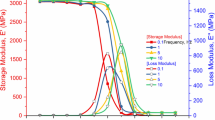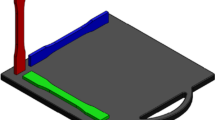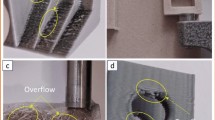Abstract
Several reports have studied the mechanical properties of the material extrusion additive manufacturing process, specifically referred to as fusion deposition modeling (FDM) developed by Stratasys. As the applications for 3D printed parts continue to grow in diversity (e.g., gears, propellers, and bearings), the loading conditions applied to printed parts have become more complex, and the need for thorough characterization is now paramount for increased adoption of 3D printing. To broaden the understanding of torsional properties, this study focused on the shear strength of specimens to observe the impact from additive manufacturing. A full factorial (42) design of experiments was used, considering the orientation and the raster angle as factors. XYZ, YXZ, ZXY, and XZY levels were considered for the orientation parameter, as well as 0°, 45°, 90°, and 45°/45° for the raster angle parameter. Ultimate shear strength, 0.2% yield strength, shear modulus, and fracture strain were used as response variables to identify the most optimal build parameters. Additionally, stress-strain diagrams are presented to contrast elastic and plastic regions with traditional injection molding. Results demonstrated an interaction of factors in all mechanical measured variables whenever an orientation and a raster angle were applied. Compared to injection molding, FDM specimens were similar for all measured torsion variables except for the fracture strain; this led to the conclusion that the FDM process can fabricate components with similar elastic properties but with less ductility than injection molding. The orientation in YXZ with the raster angle at 00 resulted in the most suitable combination identified in the response optimization analysis.
Similar content being viewed by others
References
Gartner (2016) Gartner Says Worldwide Shipments of 3D Printers to Grow 108 Percent in 2016. http://www.gartner.com/newsroom/id/3476317. Accessed 17 Nov 2017
ASTM F2792-12a (2012) Standard terminology for additive manufacturing technologies. ASTM International, West Conshohocken
Torres J, Cotelo J, Karl J, Gordon AP (2015) Mechanical property optimization of FDM PLA in shear with multiple objectives. JOM 67(5):1183–1193. https://doi.org/10.1007/s11837-015-1367-y
Croccolo D, De Agostinis M, Olmi G (2013) Experimental characterization and analytical modelling of the mechanical behavior of fused deposition processed parts made of ABS-M30. Comput Mater Sci 79:506–518. https://doi.org/10.1016/j.commatsci.2013.06.041
Bellini A, Güçeri S (2003) Mechanical characterization of parts fabricated using fused deposition modeling. Rapid Prototyp J 9(4):252–264. https://doi.org/10.1108/13552540310489631
Ziemian C, Sharma M, Ziemian S (2012) Anisotropic mechanical properties of ABS parts fabricated by fused deposition modelling. Mech Eng. https://doi.org/10.5772/34233
Hossain MS, Espalin D, Ramos J, Perez M, Wicker R (2014) Improved mechanical properties of fused deposition modeling-manufactured parts through build parameter modifications. J Manuf Sci Eng 136(6):061002. https://doi.org/10.1115/1.4028538
Sood AK, Ohdar RK, Mahapatra SS (2010) Parametric appraisal of mechanical property of fused deposition modelling processed parts. Mater Des 31(1):287–295. https://doi.org/10.1016/j.matdes.2009.06.016
Lee CS, Kim SG, Kim HJ, Ahn SH (2007) Measurement of anisotropic compressive strength of rapid prototyping parts. J Mater Process Technol 187-188:627–630. https://doi.org/10.1016/j.jmatprotec.2006.11.095
Ahn S, Montero M, Odell D, Roundy S, Wright PK (2002) Anisotropic material properties of fused deposition modeling ABS. Rapid Prototyp J 8(4):248–257. https://doi.org/10.1108/13552540210441166
Wu W, Geng P, Li G, Zhao D, Zhang H, Zhao J (2015) Influence of layer thickness and raster angle on the mechanical properties of 3D-printed PEEK and a comparative mechanical study between PEEK and ABS. Materials 8(9):5834–5846. https://doi.org/10.3390/ma8095271
Lee BH, Abdullah J, Khan ZA (2005) Optimization of rapid prototyping parameters for production of flexible ABS object. J Mater Process Technol 169(1):54–61. https://doi.org/10.1016/j.jmatprotec.2005.02.259
Roberson DA, Torrado Perez AR, Shemelya CM, Rivera A, MacDonald E, Wicker RB (2015) Comparison of stress concentrator fabrication for 3D printed polymeric izod impact test specimens. Additive Manufacturing 7:1–11. https://doi.org/10.1016/j.addma.2015.05.002
Es-Said OS, Foyos J, Noorani R, Mendelson M, Marloth R, Pregger BA (2000) Effect of layer orientation on mechanical properties of rapid prototyped samples. Mater Manuf Process 15(1):107–122. https://doi.org/10.1080/10426910008912976
Anitha R, Arunachalam S, Radhakrishnan P (2001) Critical parameters influencing the quality of prototypes in fused deposition modelling. J Mater Process Technol 118(1-3):385–388. https://doi.org/10.1016/s0924-0136(01)00980-3
ASTM F2921-11 (2011) Standard terminology for additive manufacturing coordinate systems and test methodologies. ASTM International, West Conshohocken
Riley W, Sturges L, Morris D (2006) Mechanics of materials. John Wiley & Sons, Hoboken
ASTM D5279-13 (2013) Standard practice for conditioning plastics for testing. ASTM International, West Conshohocken
ASTM D618-13 (2013) Standard test method for plastics: dynamic mechanical properties: in torsion. ASTM International, West Conshohocken
Beer FP, Johnston ER, DeWolf JT, Mazurek DF (2012) Mechanics of materials. McGraw-Hill Engineering Series, New York
Fitzgerald RW (1982) Mechanics of materials. Addison-Wesley, Reading
Navidi W (2006) Statistics for engineers and scientists. McGraw-Hill, New York
Derringer G, Suich R (1980) Simultaneous optimization of several response variables. J Qual Technol 12:214–219
Acknowledgements
This work was supported by the University of Texas at El Paso (UTEP) within the W.M. Keck Center for 3D Innovation in collaboration with the Universidad Autónoma de Ciudad Juarez (Autonomous University of Ciudad Juárez).
Author information
Authors and Affiliations
Corresponding author
Rights and permissions
About this article
Cite this article
Balderrama-Armendariz, C.O., MacDonald, E., Espalin, D. et al. Torsion analysis of the anisotropic behavior of FDM technology. Int J Adv Manuf Technol 96, 307–317 (2018). https://doi.org/10.1007/s00170-018-1602-0
Received:
Accepted:
Published:
Issue Date:
DOI: https://doi.org/10.1007/s00170-018-1602-0




